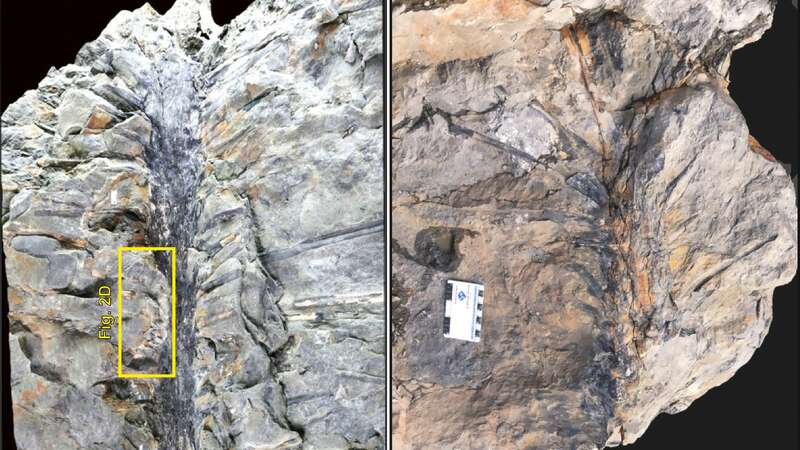

Remarkable 3D fossils of ancient “Dr. Seuss trees” are shedding light on secrets from hundreds of millions of years ago.
Scientists have been left “gobsmacked” by the incredible find, which shows a snapshot of the world from when the planet’s early forests were starting to evolve. A freak earthquake 350 million years ago buried the trees while they were still standing, preserving them perfectly, according to a study published Friday in the journal Current Biology.
“There are only five or six trees that we can document, at least in the Paleozoic, that were preserved with its crown intact,” said Robert Gastaldo, a professor of geology at Colby College in Waterville, Maine who led the study.
READ MORE: Stomach contents of Tyrannosaur give insight into how predator ate 80million years ago
Most tree fossils are just the remains of a trunk or stump with roots attached - for the team to find a preserved tree that could have been 15 feet tall in its maturity with an 18-foot diameter crown left the paleontologist “gobsmacked.”
 Tsunami warning after huge 7.2-magnitude earthquake rocks Ring of Fire island
Tsunami warning after huge 7.2-magnitude earthquake rocks Ring of Fire island
The previously unknown trees, which look somewhat like a modern fern or palm, were found in a quarry in the Canadian province of New Brunswick. They were named “Sanfordiacaulis,” after Laurie Sanford, the owner of the quarry. The most complete specimen of the newly discovered fossils has more than 250 leaves preserved around its trunk, with each partially preserved leaf extending around 5.7 feet (1.7 meters).
“It’s a very Dr. Seuss-looking tree. It’s a weird and wonderful idea of what this thing could look like,” said Olivia King, one of the pair who unearthed the first of the ancient trees at the quarry in 2017. The researchers slowly uncovered more and more trees until they had exposed a stand of five of the unique fossils.
 A reconstruction of what a Sanfordiacaulis densifolia would have looked like (Robert A. Gastaldo, et al)
A reconstruction of what a Sanfordiacaulis densifolia would have looked like (Robert A. Gastaldo, et al)Matthew Stimson, who made the initial find along with King, said the trees were probably fossilized due to a “catastrophic” landslide caused by an earthquake that buried them very rapidly. “These trees were alive when the earthquake happened. They were buried very quickly, very rapidly after that, at the bottom of the lake, and then the lake (went) back to normal,” he told CNN.
There are almost no tree fossils like this from this period of time, or any other - finding a complete fossilized tree is much rarer than finding a complete dinosaur - meaning the finds have played a valuable role in filling in the blanks about what early forests would have looked like.
The rare 3D fossils are “time capsules” Gastaldo said - giving researchers a unique glimpse back into the distant past, “literally little windows into deep-time landscapes and ecosystems.” However Sanfordiacaulis seems to have been short-lived, with the shape of the plant failing to re-appear in any later finds in the fossil record, indicating it was most likely a failed experiment of evolution, the researchers said.